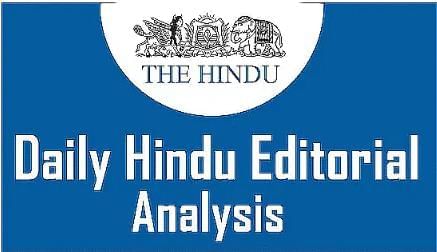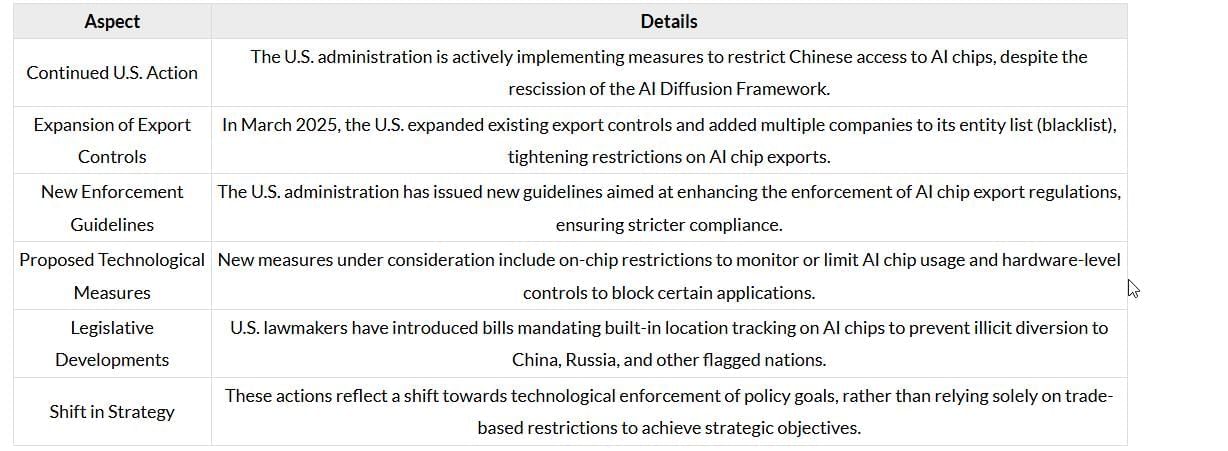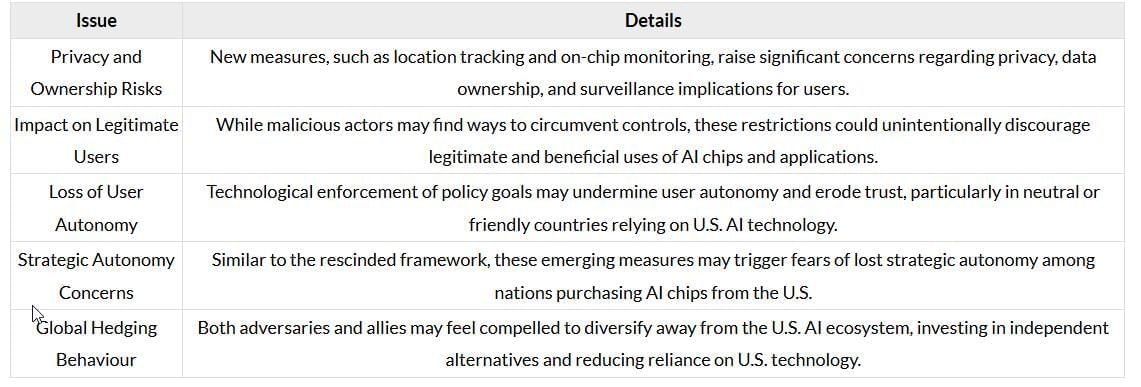The Hindu Editorial Analysis- 27th June 2025 | Current Affairs & Hindu Analysis: Daily, Weekly & Monthly - UPSC PDF Download

Fathoming America’s Plan to Manage AI Proliferation
Why in News?
The rollback of the AI Diffusion Framework appears to be more of a tactical adjustment rather than a fundamental change in strategy.
Introduction
The recent decision by the United States to revoke its Framework for AI Diffusion—initially a set of export controls on Artificial Intelligence (AI) technology—has been largely viewed as a positive development. This framework was criticized for being counterproductive to both the advancement of AI technologies and diplomatic relations. However, it seems that controls on AI are likely to persist, albeit in a modified or more subtle manner.
Understanding the AI Diffusion Framework: Origins, Implications, and Revocation
Introduction of the Framework- Launched by the Biden Administration: The AI Diffusion Framework was introduced in the final week of the Biden Administration’s tenure.
- Policy Components: It combined export controls and licensing requirements for AI chips and model weights, emphasizing the strategic importance of AI akin to nuclear technology.
- Policy Design and Scope: The framework imposed blanket embargoes on countries like China and Russia, while offering preferential access to trusted allies. It was based on the premise that greater computational power leads to superior AI capabilities.
Strategic Logic Behind the Framework
- Control over Compute Equals Control over AI Power: The framework aimed to preserve U.S. leadership by denying adversaries access to high-powered compute resources and retaining AI development within the U.S. and its allies.
- Expansion of Pre-existing Controls: While there were previous controls on AI hardware, the new framework sought to tighten regulations and standardize licensing and export procedures.
Negative Consequences of the Framework
- Unintended Outcomes: The framework’s sweeping restrictions had counterproductive effects, impacting both adversaries and partners.
- Damaged Technology Cooperation: It created discomfort among allies, prompting them to invest in their own AI ecosystems and pursue technological autonomy.
- Mischaracterisation of AI: By treating AI as a military-first technology, the framework overlooked its civilian origins and the need for global collaboration in its advancement.
Counterproductive Innovation Incentives
- Motivated Workarounds: The restrictions spurred innovation aimed at reducing reliance on powerful compute, leading to breakthroughs in countries like China.
- Case Example: DeepSeek R1 (China): This model, developed with limited compute resources, rivals top U.S. models, demonstrating the limitations of export controls on chips.
Revocation and Continuing Concerns
- Trump Administration’s Reversal: The AI Diffusion Framework was rescinded by the Trump Administration, acknowledging its strategic and diplomatic shortcomings.
- Enduring Strategic Mindset: Despite the revocation, the U.S. objective of restricting Chinese access to advanced AI remains unchanged, with controls likely to persist in new or indirect forms.
The possible replacement

Related Concerns of Emerging U.S. AI Chip Controls

Conclusion
The revocation of the AI Diffusion Framework signifies a notable policy shift, but it appears to represent a tactical adjustment rather than a fundamental change in the U.S. approach to regulating AI proliferation. If technologically-driven control measures continue to gain traction in U.S. policy discussions and are implemented, there is a risk of replicating the negative outcomes associated with the original framework. This suggests that the key lessons from both the implementation and withdrawal of the framework have not been fully grasped. In such a scenario, the U.S. could inadvertently undermine its own leadership in AI, which is the very goal these measures aim to achieve.
Vaccinating India
Why in News?
A large number of zero-dose children are still found in poor families.
Introduction
- Between 1980 and 2023, there has been a big improvement in global vaccination coverage.
- This improvement is especially seen in vaccines for diseases like measles, polio, and tuberculosis.
- A major achievement has been the worldwide decrease in the number of zero-dose children, a key sign of health equity.
- However, even with these advancements, India still has a high number of zero-dose children.
- This situation points to ongoing regional and socio-economic differences in access to vaccinations.
Global Vaccination Trends (1980–2023)
Global Progress:
- Vaccination coverage for six major diseases, including measles, polio, tuberculosis, diphtheria, tetanus, and pertussis, doubled globally between 1980 and 2023.
- There was a significant reduction in zero-dose children, highlighting improved healthcare access and reduced inequality.
India’s Zero-Dose Children:
- 1992: 33.4% of children were zero-dose, indicating poor outreach and high neglect.
- 2016: Improvement to 10.1%, showing significant progress in vaccination efforts.
- 2019: Pre-COVID, India had about 1.4 million zero-dose children, setting a WHO baseline.
- 2021: Spike to 2.7 million due to pandemic disruptions.
- 2022: Recovery to 1.1 million zero-dose children.
- 2023: Slight increase to 1.44 million, still above WHO targets.
Global Standing:
- India ranks second globally in zero-dose children and is among eight countries accounting for over 50% of the world’s zero-dose children.
- 2023 Zero-Dose Percentage: 6.2%, relatively lower due to India’s large birth cohort.
Factors Influencing Immunisation in India
Geographical Disparities:
- High numbers of zero-dose children are concentrated in large states such as Uttar Pradesh, Bihar, Maharashtra, Rajasthan, Madhya Pradesh, and Gujarat.
- Northeastern states like Meghalaya, Nagaland, Mizoram, and Arunachal Pradesh also show high zero-dose rates.
Sociodemographic Factors:
- Poor Households: High vulnerability to zero-dose status.
- Low-Education Mothers: Increased risk of zero-dose children.
- Scheduled Tribes (STs): High vulnerability to zero-dose status.
- Muslim Communities: Increased risk of zero-dose children.
- Gender and Caste Gaps: These gaps have reduced over time, but disparities still exist.
Location-Based Challenges:
- Hard-to-reach tribal areas face significant challenges in vaccination outreach.
- Urban slums with migrant populations also struggle with vaccination access.
- Vaccine hesitancy, particularly among Muslim families, poses a challenge to immunisation efforts.
Meeting WHO’s IA2030 Target
Target Year:
- By 2030, India aims to halve the number of zero-dose children compared to 2019 levels.
- This requires reducing zero-dose children to approximately 0.7 million by 2030.
Current Status (2023):
- India is still at the 2019 level of 1.4 million zero-dose children.
Required Interventions:
- Sustained and targeted efforts are needed in low-performing states and underserved communities.
- Awareness and trust-building programs are essential to combat vaccine hesitancy and improve immunisation rates.
Conclusion
India has made significant strides in reducing zero-dose children, but the current figures indicate a need for focused strategies. To align with WHO’s Immunization Agenda 2030, India must prioritize vulnerable regions, address vaccine hesitancy, and enhance health infrastructure. Continuous efforts are crucial to achieving universal immunisation and ensuring healthcare equity for all children, irrespective of their background or location.
|
44 videos|5271 docs|1113 tests
|
FAQs on The Hindu Editorial Analysis- 27th June 2025 - Current Affairs & Hindu Analysis: Daily, Weekly & Monthly - UPSC
| 1. What are the key strategies proposed by the United States to manage the proliferation of artificial intelligence (AI)? |  |
| 2. How does the editorial discuss the implications of AI proliferation for global security? |  |
| 3. In what ways does the article suggest that India can enhance its vaccination efforts? |  |
| 4. What role does international collaboration play in managing AI proliferation, according to the editorial? |  |
| 5. How do public health strategies in India relate to the broader global context of vaccination? |  |





















